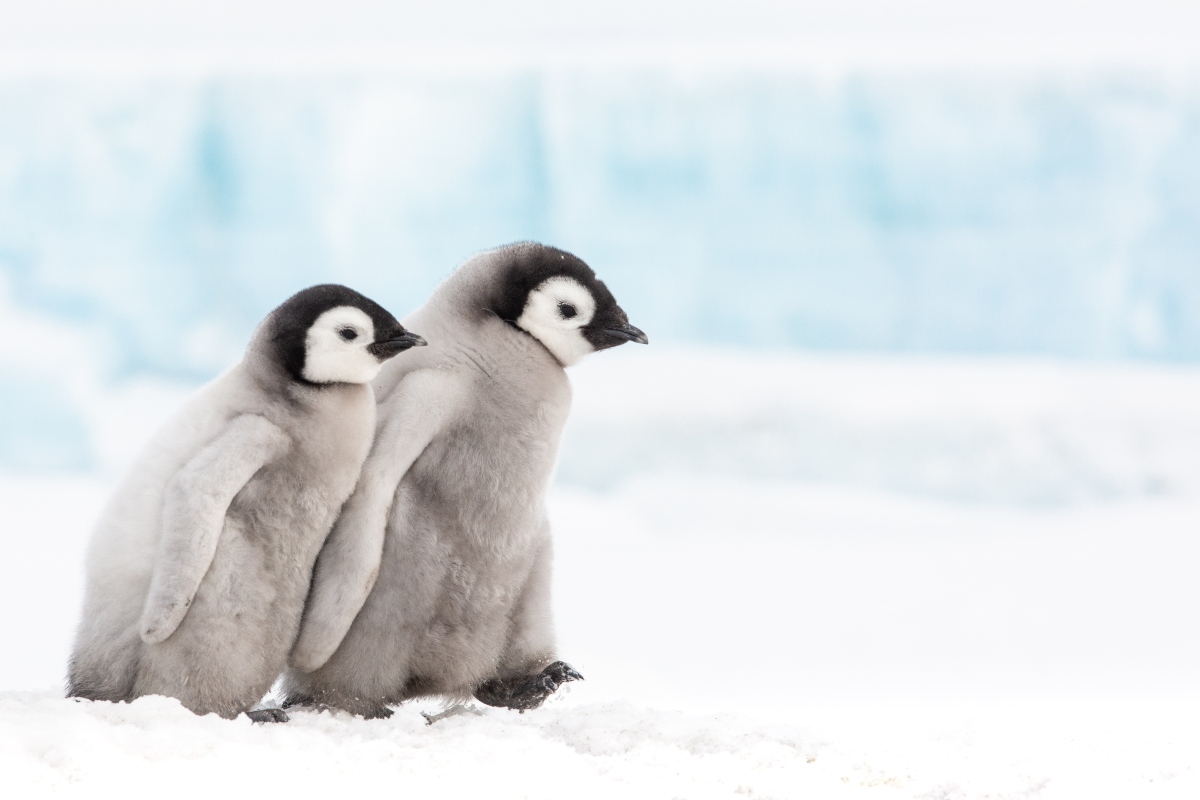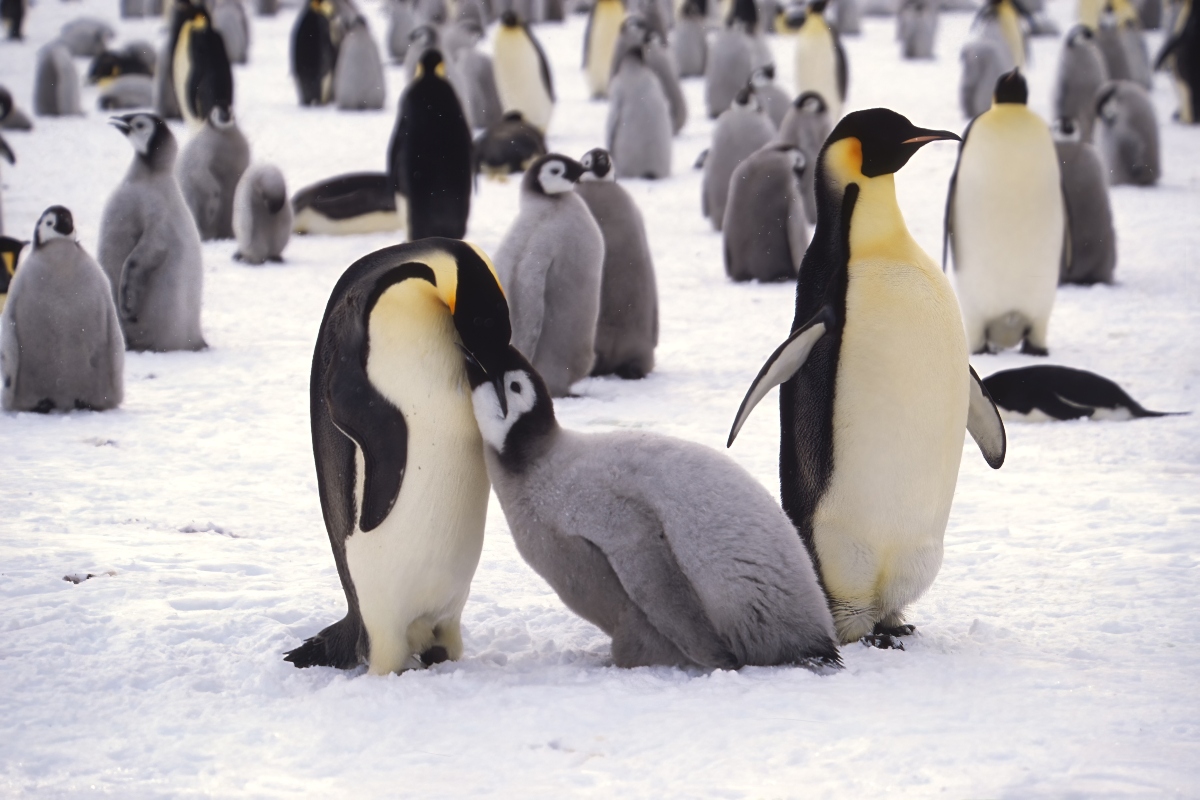Emperor Penguins, known scientifically as Aptenodytes forsteri, reign over the frozen expanses of Antarctica, with a majesty that is reflected in their name. These are the tallest and heaviest of all penguin species, with a potential height of up to 4 feet and a weight that can exceed 80 pounds.

Their distinct, sleek black and white plumage, punctuated by bursts of vibrant yellow and orange around their necks, marks them as visually stunning members of the Antarctic ecosystem. The Emperor Penguins stand resilient against the unforgiving Antarctic chill, armed with a layer of blubber and dense feathering that provides insulation in the frigid temperatures.
Emperor Penguins possess a unique breeding cycle in the animal kingdom. Braving the brutal Antarctic winter, the males incubate their single egg by balancing it on their feet, tucked beneath a fold of skin known as a brood pouch. During this stark and bitter winter, male Emperors huddle together for warmth, foregoing food for months, while the females venture to the sea for nourishment. The arrival of the females, who return to feed their newly hatched chicks by regurgitating partially digested food, signals a swap in parental duties, allowing the males to embark on their own feeding expeditions.
The Emperor Penguin’s diet predominantly consists of fish, though squid and krill also feature as essential components. Their hunting prowess is demonstrated through their remarkable diving abilities, with the capacity to plunge to depths of over 1,800 feet and remain submerged for approximately 20 minutes, navigating the icy waters with remarkable agility and precision.

Emperor Penguins exhibit a striking social dynamic, particularly throughout the breeding season. The huddling behavior of the males, which facilitates the sharing and conservation of heat during the harsh winter, exemplifies cooperation and communal living, essential for survival in the world’s most hostile environment.
Despite their size and lack of natural land predators, Emperor Penguins face threats from climate change, which impacts the stability of their icy habitats, and industrial fishing, which can diminish their food sources. Their endurance and tenacity in the frigid Antarctic frontier, coupled with their complex social and breeding behaviors, make Emperor Penguins a symbol of strength, perseverance, and unity in the animal kingdom.
In tales and images, they often emerge as dignified, resilient, and loving creatures, narrating a story of survival, familial bonds, and adaptability amidst the desolation of the Antarctic ice. And thus, the Emperor Penguin stands as a regal emblem amidst the icy wilderness, a testament to life’s persistence against the elemental forces of our planet.